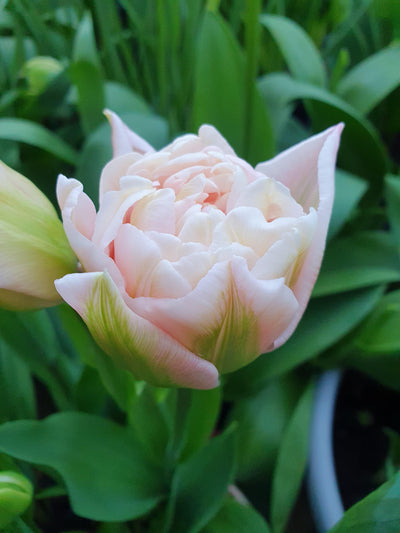Pruning Basics for Autumn and Winter
For many, late autumn is viewed as a time of tidying up, and of making the garden neat and orderly for winter. But this doesn’t have to be the case, and with careful and selective pruning you can ensure that your garden retains structural interest throughout the colder months - while still retaining its class and elegance. Some gardeners are eager to clear away the remnants of summer: seed heads, foliage and stems. However while this may be satisfying and efficient after a long season, gardens can be left stark and bear with little interest; many of the perennials chopped down in autumn would hold their own structurally until spring if given a chance. But don’t put the secateurs down altogether, and with these few basics of pruning your garden can be illuminated by silhouettes of the previous season, while still remaining neat and maintained, just with a touch of wilderness.

There are some plants that will really benefit from an autumn prune, such as Mediterranean herbs and shrubs like rosemary, lavender and cistus which will suffer from frosts if pruned in winter. A light prune, not reaching into woody growth, will give the plant a new lease of life and enable it to produce a flush of green growth in spring. Clip the plants back to tidy, deadhead and reshape them all in one go. The exception to this is French lavender, which benefits from a prune only in spring, allowing its stems and leaves to protect it from frost in the winter. Soft fruit bushes should also be given a prune now, and blackberries, gooseberries and redcurrants can be thinned out. Using secateurs cut any fruited stems down to the ground. Any perennials that are clearly past their best and do not hold a strong structure such as delphiniums can also be cut back, as they will get soaked by winter rains and may even become prone to fungal disease.

Winter pruning is most useful for shrub roses, as well as fruit trees like apples and pears. The cold months are the season when these plants are dormant, and you are able to modify the shape of the plant and get rid of any too dominating of stems ready for next year’s growth. Each species of rose and fruit tree is pruned differently, however it is important to remember to always use sharp secateurs and/or loppers whenever pruning; this creates a clean cut and enables the plant to recover quicker and create fresh growth. Be mindful of the final shape you want to create, be that a fan-like espalier for a pear or a rounded dome for a shrub rose or hybrid tea.

Grasses are a family of plants that really should not be pruned until spring. The feathery flowers of miscanthus and the architectural shape of pennisetum are invaluable in a winter and autumn garden, not to mention the bright and autumnal shades that the leaves turn. Evergreen grasses such as carex aren’t pruned altogether and are very useful in providing rhythm to a border. Hold back completely on pruning any grasses this autumn, and rather wait until the new shoots of spring to prolong their season of interest even further.

It can be handy to leave certain perennials that are traditionally cut back now in order to save your borders from looking bare and depleted over winter. Flowers like rudbeckia, echinacea, lychnis, eryngium and sedum all have beautiful seedheads, and will shine in a winter frost as well as providing a late season snack for any passing wildlife. However, some perennials such as geraniums will need to be cleared for fear of the leaves becoming soggy and looking feeble in the winter, however perhaps wait until later than usual before cutting them down; in clearing them away you risk missing stunning autumnal shades and burnt orange leaves.
The most important rule for pruning is to be doubly sure before you cut any plant, stepping back and considering whether it is the right time of year for pruning and the overall effect you want to create. Perhaps you are correcting the circular crown of a bay tree in July or giving topiary its first clip in spring. But don’t be lured into pruning your hydrangeas when they become bronze in autumn, as the spent flowerheads must remain before pruning in spring in order to protect the tender stems from frosts. It is vital to remember when cutting back to always prune less rather than more - you can always prune further but you cannot re-attach!





Leave a comment